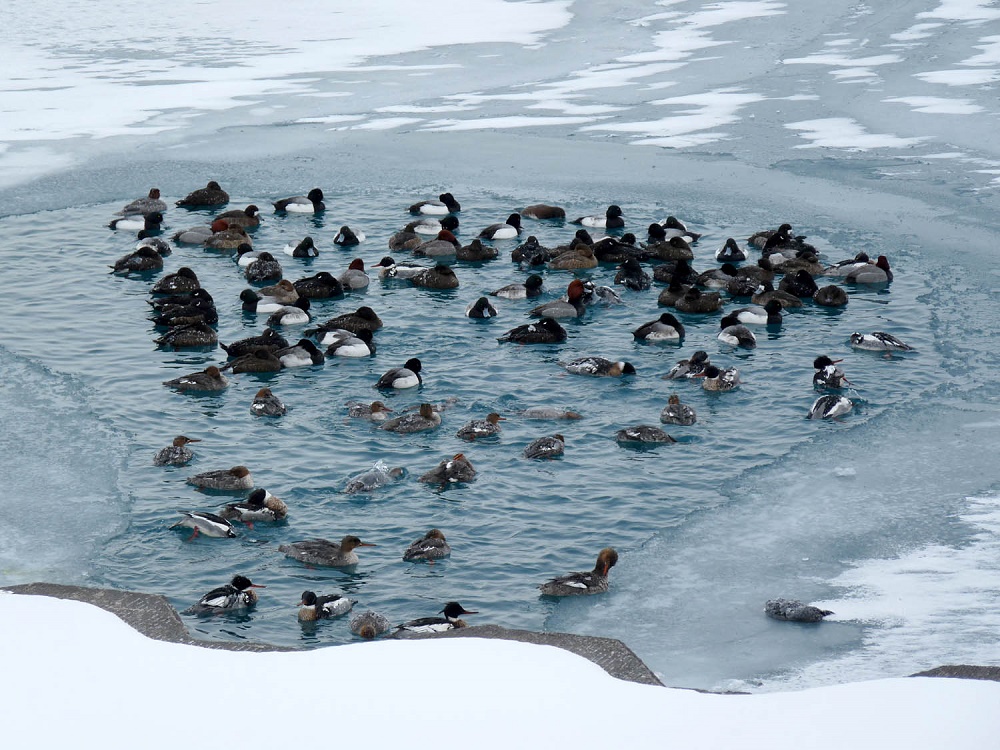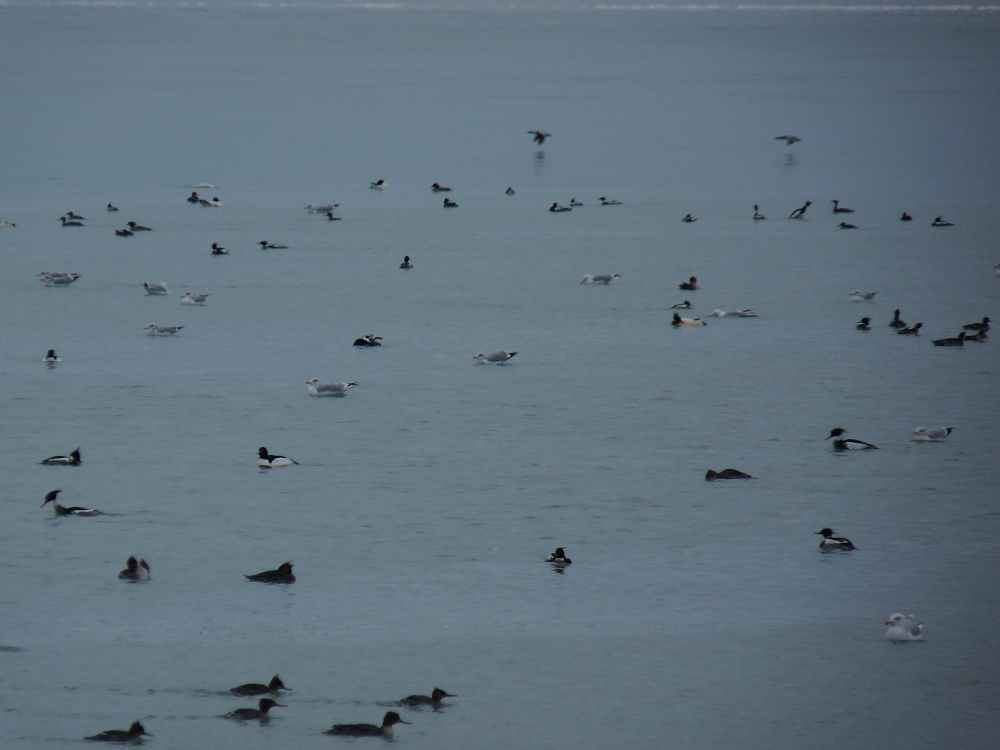
White-winged Scoters, Red-breasted Mergansers, and Greater Scaup. March 2014. (click to see the larger version)
Lake Michigan is a huge body of water. At 300 miles long and almost 120 miles at its widest, it’s rightly considered an inland sea as much as a large lake. In winter, Lake Michigan supports tens if not hundreds of thousands of waterfowl. Most are Common and Red-breasted Mergansers, Common Goldeneye, Long-tailed Ducks, and Greater Scaup. Any open area of water on the Lake will host at least a few of these species in winter. These birds depend on the Lake for food. As long as they have access to open water they can hunt for fish, crustaceans, and mollusks and survive the worst that winter has to offer. They’re all resilient birds. Lake Michigan has never completely frozen over, but it’s come close. The winter of 2013/2014 was especially cold and saw a 93% peak ice coverage in early March. The stress this puts on the birds that depend on having open water is enormous. Some don’t make it. I remember the winter of 2013/2014. In early March, Lake Michigan was frozen to the horizon at Montrose Point in Chicago, with a tiny open spot off the southeast point. In this open spot were a group of Greater Scaup, White-winged Scoters, and Red-breasted Mergansers, all desperate and trying frantically to survive. The only thing keeping the water from freezing was their paddling and movement. I found several dead ducks, some frozen on the ice, and a few even on land. This is a reminder of how harsh nature can be, and what happens when a resource becomes unavailable to large numbers of birds.

Red-breasted and Common Mergansers and Herring Gulls. February 2021. (click to see the larger version)
As I write this post in mid-February 2021, Chicago is experiencing a stretch of unseasonably cold late winter weather. Most of Lake Michigan at Montrose is frozen to the horizon, with small areas of open water at the harbor mouth and off the fishing pier. From a birding point of view, checking these open areas is worthwhile since they tend to attract and concentrate ducks and gulls. In addition to the expected Common and Red-breasted Mergansers and Common Goldeneye, we’ve seen Long-tailed Duck and Black Scoter. According to NOAA, Lake Michigan has about 27% ice coverage, a far cry from 93% in 2014. If the unseasonably cold weather persists, the 27% will no doubt increase.
